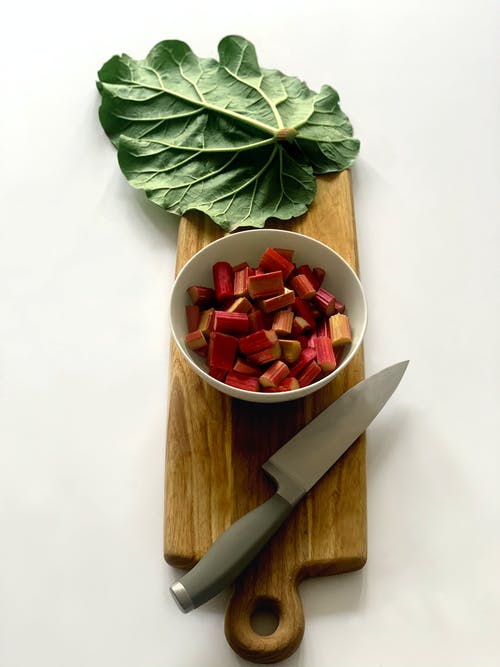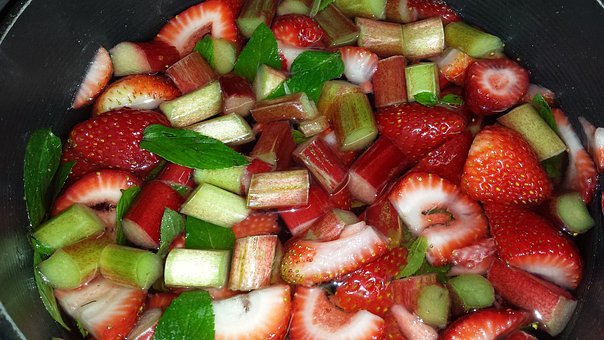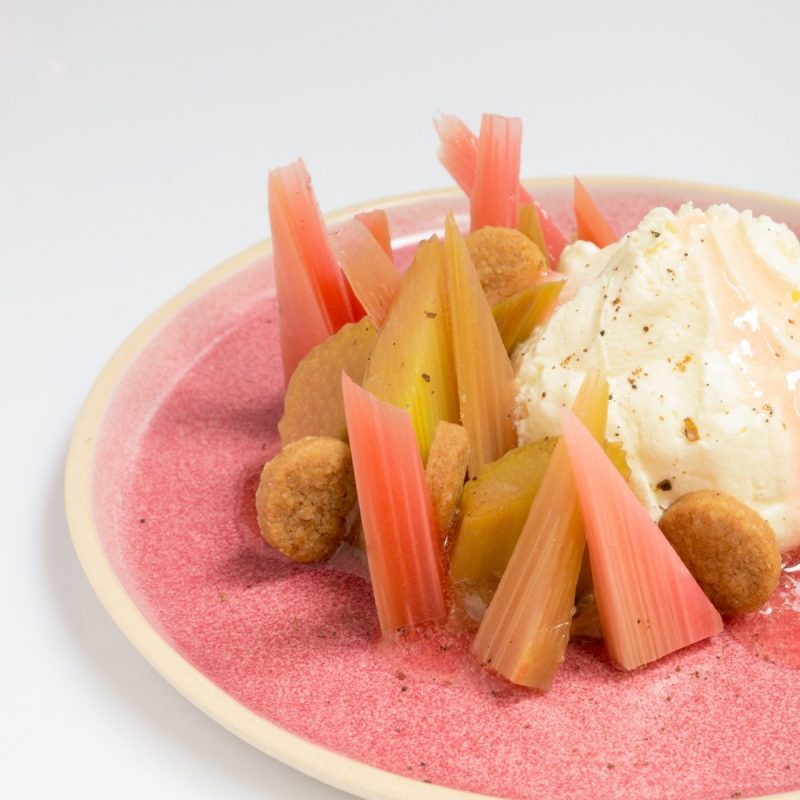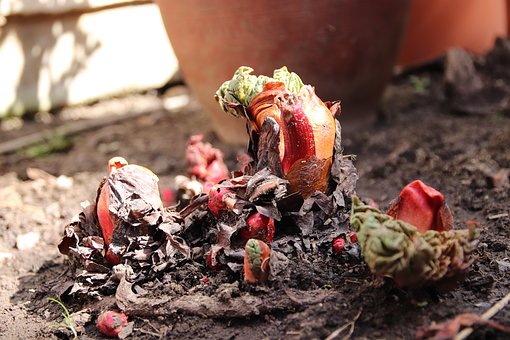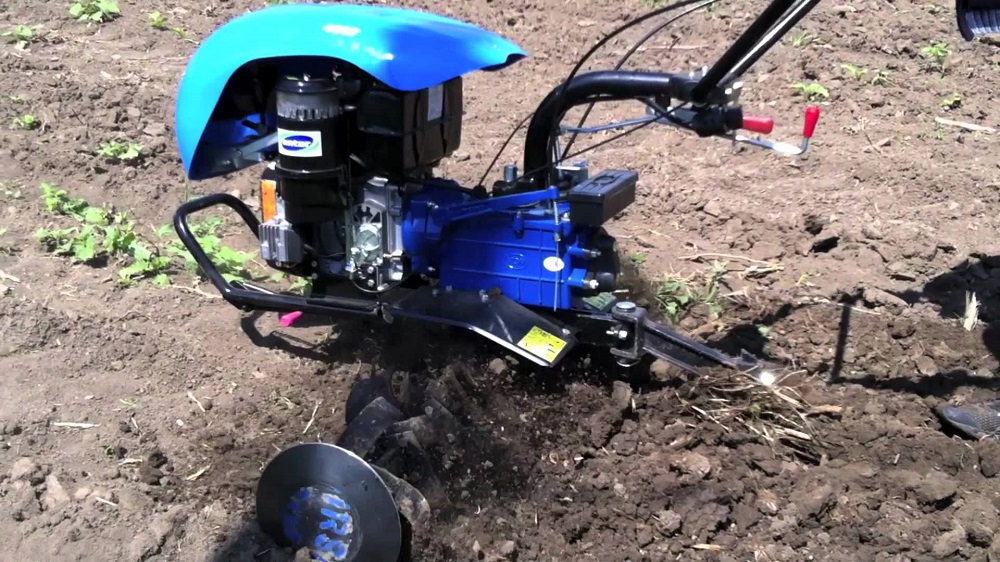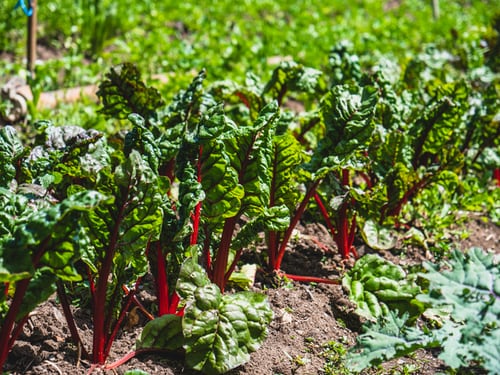Rhubarb, information about crop management
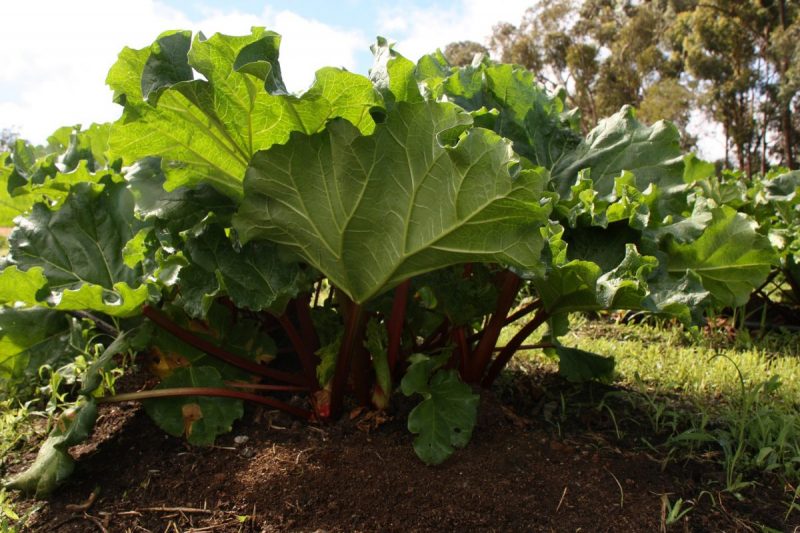
Rhubarb (Rheum rhabarbarum) is a perennial herb belonging to the Polygonaceae plant family, genus Rheum. It is a vegetable cultivated for the edible petiole of its leaves, with a sweet-sour taste and a high content of organic acids, mineral salts, vitamins, and proteins. Rhubarb can be eaten in various forms: raw, in cakes, in soups, etc., or it can be made into marmalade or rhubarb cider. It is used for medicinal purposes and has therapeutic properties. Rhubarb leaves should NOT be eaten as they contain toxic substances that can cause indigestion, kidney failure, or metabolic diseases.
Botanical particularities
It can reach 1-2 m in height and has strong rhizomes and roots developed deep in the soil. It grows tall, edged petioles, green, pink, sometimes red, or even purplish. The leaves are very large, cordate, and arranged in rosettes. The flowering stems are up to 1-2 m tall, hollow inside, and have small, greenish-white flowers clustered in the upper part of the stem. The fruits are brown achenes with a single seed.
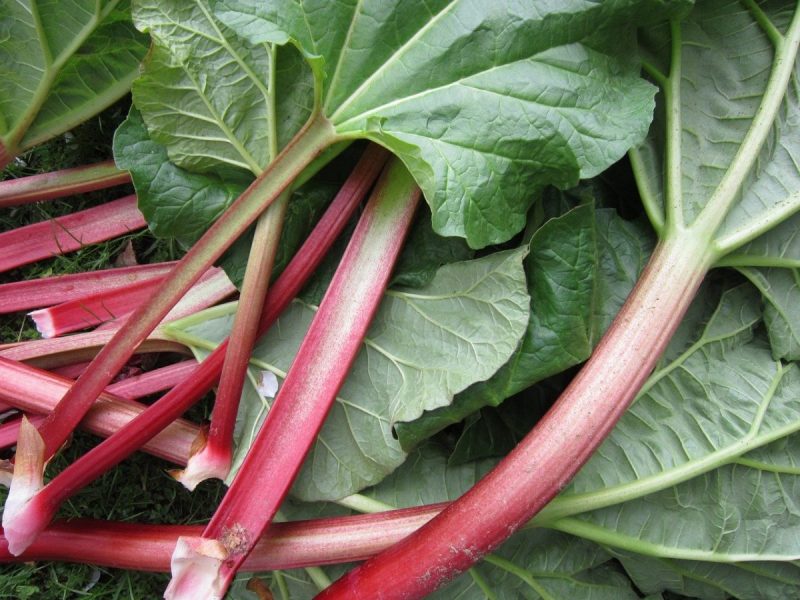
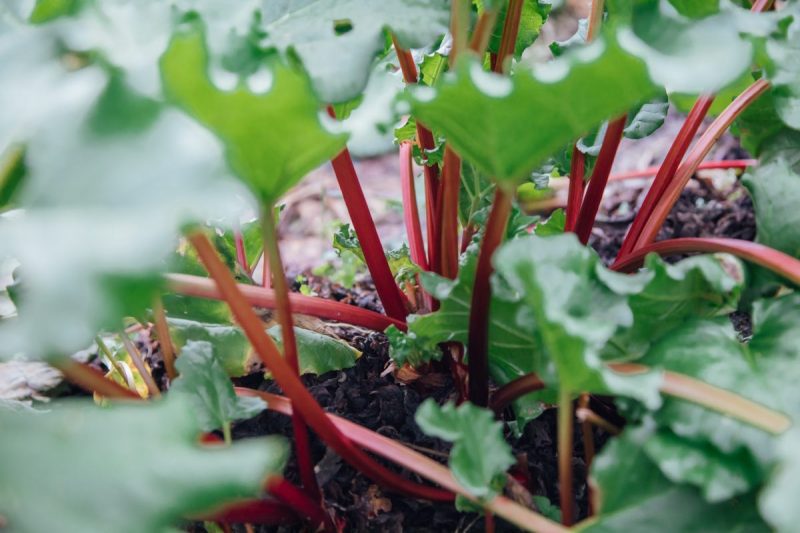
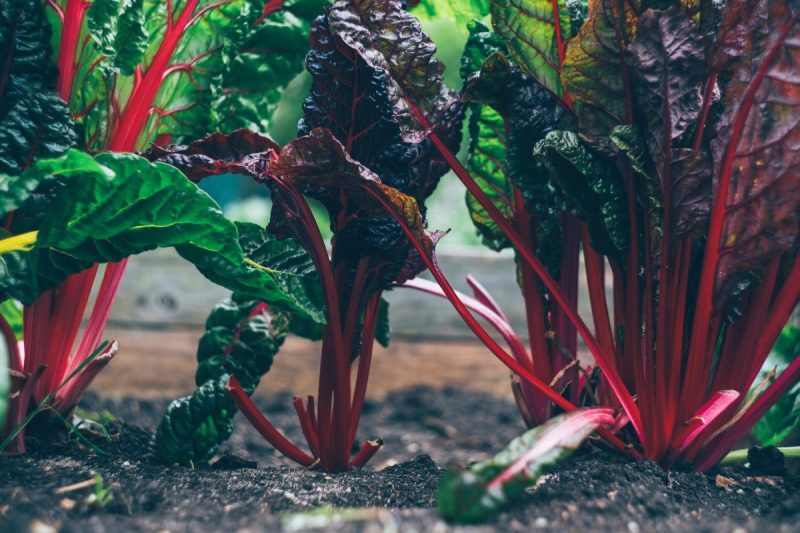
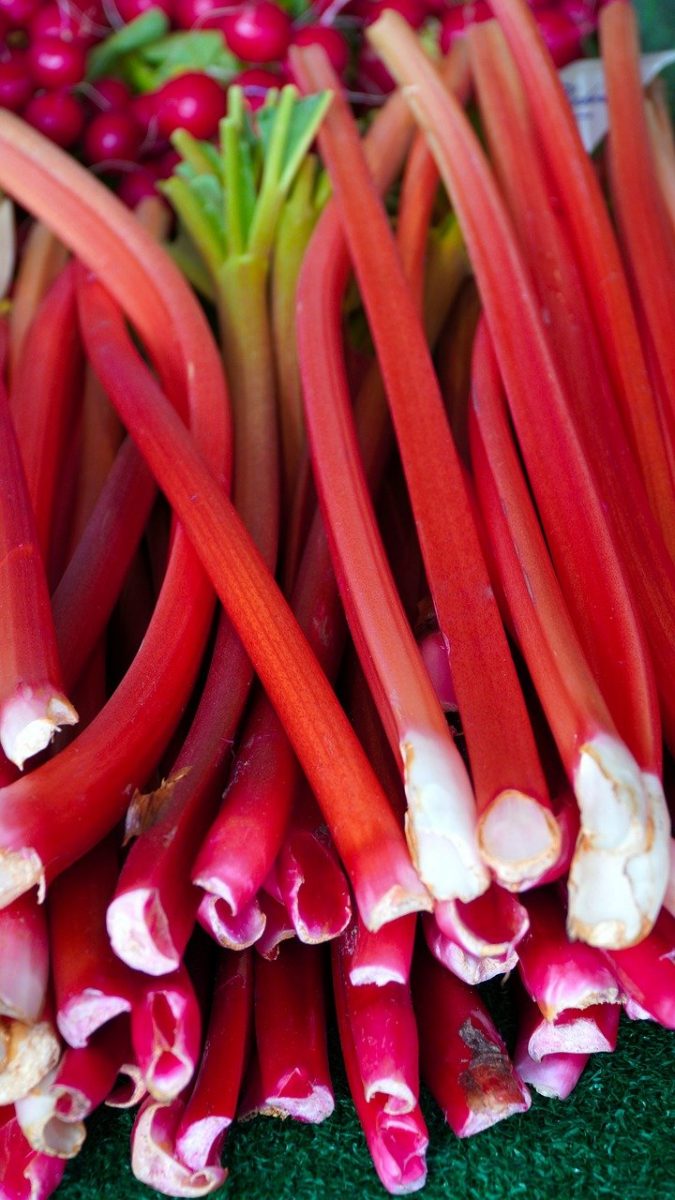
Varieties
- Rheum rhabarbarum var. latifolium – broad-leaved;
- Rheum rhabarbarum var. longifolium – with elongated leaves;
- Rheum rhabarbarum var. rotundifolium – with round leaves;
- Rheum rhabarbarum var. crispatum – with crenate leaves on the edges.
Recommended products
-
You can find products on a different store
Change Store -
You can find products on a different store
Change Store -
You can find products on a different store
Change Store -
You can find products on a different store
Change Store -
You can find products on a different store
Change Store -
You can find products on a different store
Change Store -
You can find products on a different store
Change Store -
You can find products on a different store
Change Store -
You can find products on a different store
Change Store -
You can find products on a different store
Change Store -
You can find products on a different store
Change Store -
You can find products on a different store
Change Store -
You can find products on a different store
Change Store -
You can find products on a different store
Change Store -
You can find products on a different store
Change Store -
You can find products on a different store
Change Store -
You can find products on a different store
Change Store -
You can find products on a different store
Change Store -
You can find products on a different store
Change Store -
You can find products on a different store
Change Store -
You can find products on a different store
Change Store -
You can find products on a different store
Change Store -
You can find products on a different store
Change Store -
You can find products on a different store
Change Store
Climate and soil requirements
This plant can adapt to a wide variety of environmental conditions. It is a species adapted to harsh climatic conditions, with low temperatures in winter. The aerial parts can be damaged by frost, but the rhizomes in the soil can withstand temperatures down to about -15℃. During the growing season, the optimum temperature for growth and development is 18-20℃. It tolerates shade but grows better in semi-shade or full light. With roots developed deep in the soil, rhubarb is grown in areas with deep groundwater. It grows well in nutrient-rich, heavy, clay soils.
Cultivation
To establish the rhubarb crop, it is possible to use field sowing (germination propagation) or division (vegetative propagation).
Soil preparation
After the land is cleared of previous crops, it must be fertilized with chemical or organic fertilizers, depending on the state of the soil supply. After this operation, it is recommended a deep plowing (30 – 35 cm) or a tilling to a depth of 50-60 cm. Soil tillage should be done before sowing. It can be done manually (with a hoe or rake) or semi-mechanically with a tiller.
Recommended products
-
You can find products on a different store
Change Store -
You can find products on a different store
Change Store -
You can find products on a different store
Change Store -
You can find products on a different store
Change Store -
You can find products on a different store
Change Store -
You can find products on a different store
Change Store -
You can find products on a different store
Change Store -
You can find products on a different store
Change Store -
You can find products on a different store
Change Store -
You can find products on a different store
Change Store -
You can find products on a different store
Change Store -
You can find products on a different store
Change Store -
You can find products on a different store
Change Store -
You can find products on a different store
Change Store -
You can find products on a different store
Change Store -
You can find products on a different store
Change Store -
You can find products on a different store
Change Store -
You can find products on a different store
Change Store -
You can find products on a different store
Change Store -
You can find products on a different store
Change Store -
You can find products on a different store
Change Store -
You can find products on a different store
Change Store -
You can find products on a different store
Change Store -
You can find products on a different store
Change Store
Sowing/planting
For field sowing, the optimum sowing period is March. The seed requirement is 4-5 kg/ha, with recommended distances of 1 m between rows and 80 cm between plants per row.
More often, vegetative propagation is used, resulting in a more uniform rhubarb crop. The optimum period for vegetative propagation is September – October. Use pieces of plants with 2-3 shoots and 2-3 roots, preferably from plants at least 5 years old. Planting distances are similar to those used for field sowing: 1 m between rows and 80 cm between plants per row.
Recommended products
-
You can find products on a different store
Change Store -
You can find products on a different store
Change Store -
You can find products on a different store
Change Store -
You can find products on a different store
Change Store -
You can find products on a different store
Change Store -
You can find products on a different store
Change Store -
You can find products on a different store
Change Store -
You can find products on a different store
Change Store -
You can find products on a different store
Change Store -
You can find products on a different store
Change Store -
You can find products on a different store
Change Store -
You can find products on a different store
Change Store -
You can find products on a different store
Change Store -
You can find products on a different store
Change Store -
You can find products on a different store
Change Store -
You can find products on a different store
Change Store -
You can find products on a different store
Change Store -
You can find products on a different store
Change Store -
You can find products on a different store
Change Store -
You can find products on a different store
Change Store -
You can find products on a different store
Change Store -
You can find products on a different store
Change Store -
You can find products on a different store
Change Store -
You can find products on a different store
Change Store
Care works
Rhubarb requires irrigation only in dry years, the norm being 250-300 m3 of water per hectare, 3-4 times during the growing season. Weeds can be controlled manually or mechanically whenever necessary. Removing and destroying dry leaves is essential as they can be hosts for diseases.
You can also apply specific liquid fertilizers during the growing season.
Recommended products
-
You can find products on a different store
Change Store -
You can find products on a different store
Change Store -
You can find products on a different store
Change Store -
You can find products on a different store
Change Store -
You can find products on a different store
Change Store -
You can find products on a different store
Change Store -
You can find products on a different store
Change Store -
You can find products on a different store
Change Store -
You can find products on a different store
Change Store -
You can find products on a different store
Change Store -
You can find products on a different store
Change Store -
You can find products on a different store
Change Store -
You can find products on a different store
Change Store -
You can find products on a different store
Change Store -
You can find products on a different store
Change Store -
You can find products on a different store
Change Store -
You can find products on a different store
Change Store -
You can find products on a different store
Change Store -
You can find products on a different store
Change Store -
You can find products on a different store
Change Store -
You can find products on a different store
Change Store -
You can find products on a different store
Change Store -
You can find products on a different store
Change Store -
You can find products on a different store
Change Store
Rhubarb is often affected by downy mildew and powdery mildew. It can also host other fungal diseases (spots, rust, anthracnose, rot), respectively various pests: mites, aphids, fleas, and others. It is recommended to apply preventive and control treatments with specific insecticides and fungicides.
Harvesting
Harvesting should be carried out from the second year of cultivation, by hand-pulling or cutting. It is recommended to harvest leaves with petiole during April-June, not more than 2-3 pieces per plant. After harvesting, remove and discard the leaves. Petioles can be kept for 20-25 days at 1-2℃, but at room temperature, they can be kept for only 5-6 days.

